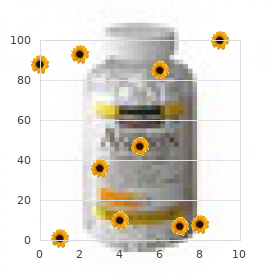Kelly K. Nystrom, PharmD, BCOP
- Associate Professor of Pharmacy Practice, Creighton University School of Pharmacy and Health Professions, Omaha, Nebraska

https://spahp.creighton.edu/faculty-directory-profile/401/kelly-nystrom
Representative findings are shown by stage of chronic kidney disease in Figs 15 and 16 pain treatment pregnancy purchase azulfidine once a day. These and other findings support the classification of stages of chronic kidney disease and are discussed in detail in Guidelines 7 through 12 st john pain treatment center order azulfidine without prescription. High blood pressure is a well-recognized public health problem in the United States pain treatment center in morehead ky azulfidine 500mg low cost. Concomitantly unifour pain treatment center hickory nc buy azulfidine master card, the rates of stroke, myocardial infarction, and heart failure have decreased by approximately 15% to 40%. Portions of the Task Force Report are reproduced in this guideline with permission of the authors. Association 125 For individuals with high blood pressure and decreased kidney function, the recommended goal is 130/85 mm Hg. The prevalence of high blood pressure is approximately 80% in hemodialysis patients and 50% in peritoneal dialysis patients. The clinically more important pathogenetic mechanisms of high blood pressure are listed in Table 72. Optimal levels of systolic and diastolic blood pressure are defined as less than 120 and 80 mm Hg, respectively. Among patients with chronic kidney disease, there is also substantial evidence of a relationship between elevated levels of blood pressure and cardiovascular risk. However, the optimal level of blood pressure to minimize adverse outcomes for cardiovascular and kidney disease has not been established. The following represent a few of the many studies that demonstrate these relationships. In one study, a higher level of systolic blood pressure, lower level of kidney function, more severe anemia, and older age were independently associated with higher left ventricular mass index. Ranges of systolic blood pressure value in mm Hg and number of patients studied in the subgroups are indicated. The association between level of blood pressure and mortality does not appear to be consistent, with a number of studies reporting either positive or negative associations. It is likely that excess risk in patients with low blood pressure reflects confounding effects of underlying or pre-existing cardiovascular disease on mortality, while the true relationship of blood pressure to mortality is reflected in the excess risk in patients with very high blood pressure as in the general population. Thus, it appears that additional efforts will be necessary to lower systolic blood pressure. In addition, the role of non-pharmacologic therapy for the treatment of high blood pressure, and as adjuncts in the prevention and treatment of cardiovascular disease, are also under investigation. Recommendations by other groups and recent studies are reviewed in Guidelines 13 and 15. Association 133 patients with more severe risk factors may not have survived to be entered into the study, thereby minimizing the apparent association between risk factors and outcomes. Thus, clinical trials may be required to determine the optimal level of blood pressure to prevent or slow progression of chronic kidney and development of cardiovascular disease. However, cross-sectional studies do not permit determination of the causal relationship between these variables. Providers must be aware of lower recommended target levels for blood pressure for patients with chronic kidney disease, specific recommendations for classes of antihypertensive agents, and the role of nonpharmacologic therapy. Importantly, past guidelines have relied on serum creatinine levels 2 mg/dL as the criterion to test for the presence of anemia. Unfortunately, this issue has been confused due to the use of hematocrit in a number of studies. Hematocrit is a derived value, affected by plasma water, and thus subject to imprecision as a direct measure of erythropoiesis. Measurement of hemoglobin gives an absolute value and, unlike hematocrit, is not affected greatly by shifts in plasma water, as may occur with diuretics or with dialysis therapy. Hemoglobin levels are directly affected by lack of erythropoietin production from the kidney and thus serve as a more precise measurement of erythropoiesis. All patients with chronic kidney disease who have hemoglobin levels lower than physiological norms are considered anemic. The definition of anemia in chronic kidney disease is further complicated by gender differences in hemoglobin levels. In the normal population, hemoglobin levels vary between genders and also as a function of menopausal status. The World Health Organization defines anemia to be that level of hemoglobin and gender-determined normal ranges without reference to age or menopausal status. Association 137 Medicaid in the United States) have required the attainment of specific levels of hemoglobin or hematocrit, leading investigators and clinicians to define anemia relative to those regulatory levels. The low hemoglobin level that is often seen in chronic kidney disease should not lead to the acceptance of lower than normal hemoglobin levels as appropriate in patients with chronic kidney disease. Lower hemoglobin may result from the loss of erythropoietin synthesis in the kidneys and/or the presence of inhibitors of erythropoiesis. The available evidence, consisting of large database analysis and population studies, clearly show that low hemoglobin levels are associated with higher rates of hospitalizations, cardiovascular disease, cognitive impairment, and other adverse patient outcomes, including mortality. Anemia in patients with chronic kidney disease is due to a number of factors, the most common of which is abnormally low erythropoietin levels. North American (United States and Canada) and European studies have demonstrated these points. The reviewed literature spans almost 30 years of investigation and describes the clinical findings of researchers as they explore the relationships between hemoglobin and kidney function (Tables 76 and 77). The majority of available data have been derived from studies of small sample size, most of which are cross-sectional studies or baseline data from clinical trials of variable size and robustness. These studies are predominantly of only moderate or modest quality from a methodological standpoint. In 12 of the 22 studies reviewed, there was an association between the level of hemoglobin or hematocrit and the selected measure of kidney function. These data are based on the results of 446 patients enrolled in the Canadian Multicentre Longitudinal Cohort study of patients with chronic kidney disease. Erythropoietin levels in patients with chronic kidney disease have not been well characterized in studies to date and do not appear to be directly related to level of kidney function. The interpretation of these findings is that patients with kidney disease, as compared to normal individuals, do not have an appropriate rise in the levels of erythropoieten in the presence of anemia; while levels may be higher than non-anemic chronic kidney disease patients, the rise in erythropoietin levels is not commensurate with that seen in 142 Part 6. Most of these measures, unlike bone marrow biopsy, do not directly quantify the amount of iron available for use in erythrocyte synthesis, relying instead on indirect or surrogate measures. Association 143 Interestingly, specific subgroups of patients (such as those with polycystic kidney disease) may have erythropoietin synthesis that is better preserved than other subgroups (such as diabetics). The use of immunosuppressive agents or other medications, or chronic inflammation due to transplant rejection, may further confound the assessment of the etiology of declining hemoglobin. The optimal monitoring of protein-energy nutritional status requires the collective evaluation of multiple parameters (ie, assessment of visceral protein, muscle mass or somatic protein, body composition). It is a very reliable indicator of visceral protein, although its concentration is also affected by its rate of synthesis and catabolism (half-life 20 days), which is altered negatively in the presence of inflammation. Several markers of visceral protein, other than albumin, have a shorter half-life and may be useful markers of early malnutrition. While each marker has its own advantage in terms of precision and predictability, it is recommended that these markers be used in a complementary fashion to optimize assessment of patients with chronic kidney disease and to tailor specific interventions. This includes review and analysis of medical and diet history, laboratory values, and anthropometric measurements. Comorbid conditions such as diabetes, vascular disease, and superimposed infections and inflammation are contributory. Studies have suggested that apart from the severity of uremic symptoms as well 148 Part 6. It is possible that comorbid conditions independently impair both nutritional intake or status and increase morbidity and mortality.
Some felt the standards were designed to be punitive pocono pain treatment center discount azulfidine 500mg, by testing their desperation and punishing them for being roof/homeless shoulder pain treatment video discount 500 mg azulfidine free shipping. For example pain management for dogs after neutering order 500 mg azulfidine overnight delivery, this 55 year old woman5 had been roofless for 7 years cordova pain treatment center cordova tn discount azulfidine 500mg amex, then used the private-rented sector for 20 years. Although on the housing waiting list, she had changed areas approximately every five years, so had to keep reapplying. After 20 years a mixture of failing health, a sharp increase in rent and a ceiling placed on housing benefit left her homeless and unable to afford anywhere else to live. They said that I could have a choice of colours and asked what colour I would like. Formal and informal interviews with housing personnel, suggested that housing officers rarely visited properties before letting them. They perceived these conditions to be temporary, meeting crisis need before more permanent accommodation could be secured. Furthermore, implicit in a number of discussions was the suggestion that deserving and undeserving homeless people still existed. Social housing conditions6: the condition of social housing, the secure settled accommodation offered to roofless people, was also a lottery. Properties in substandard, uninhabitable conditions were often let with no real plans for repair or making them fit for habitation. Foxy, male aged 32; housed 8 years the disappointment after waiting often for several years for accommodation should not be underestimated. One of the biggest motivations for leaving the streets and going through resettlement was getting a home. This one factor spurred people to achieve great changes in behaviour and lifestyle. I received a letter on Monday, viewed the place Wednesday and I have to move in by Monday. I have to move regardless, because my benefits stop on this one and start on the other. Evidence based on viewings of comparable ex-council properties (via estate agents) on the open market suggested that renovations costing in excess of fi30,000 were needed to make such properties habitable. It would appear that vulnerable people were asked to live in tenancies that most of us would struggle to live in, decorate and maintain. Most people housed in such conditions felt that they had simply moved from roofless to homeless, housed but not settled (see Rivlin and Moore 2001). It would appear that such conditions created ontological and self-identity problems that left people vulnerable to further rooflessness. Furthermore, as some people felt ashamed and embarrassed about their past and their accommodation, this made it difficult for them to invite people to visit, thus reducing the likelihood of full integration into housed society. Conversely, good furnished accommodation strongly influenced successful reintegration into society and the ability to create distance from the homeless culture. For example, against all the odds a successful businessman, who became roofless after a relationship breakdown, time in prison and time in a psychiatric hospital, was given good quality furnished accommodation. When I first moved in I went to the Salvation Army, I said I need help with going to job interviews, they gave me a suit and some other clothes. The transition from rooflessness to integration into housed society is far more than a route into adequate accommodation and support to keep that accommodation. There are a series of physical, emotional and psychological changes that need to take place. A serious look at resettling people into housed society needs to understand the draw of the homeless culture and work out ways of counter-balancing its impact. Over time, situations need to be created that allow individuals to learn to survive and thrive without it. These stages are supposedly flexible, allowing each individual to progress at their own pace. As the resettlement process takes time, Bevan (1998) proposed that support started before a tenancy was offered and then continued through four stages after they moved in. Systematic evidence suggested that many roofless people did not receive adequate resettlement help. The resulting tenancy failures were often dismissed as the personal failings of the homeless person. Furthermore there was often little recognition that as people progressed through the re-integration process, their needs and problems would change over time. Thus levels and types of support needed to be flexible and capable of adapting through the transitions people made. Evidence from projects in Exeter and Bedford suggested that chaotic entrenched roofless people, especially substance abusers, repeatedly started the resettlement process then left. Stage 4 is more flexible you get your own key, buy your own food, cook your own food and do your own washing up, etc. Gary, male aged 38; hostel resident 2 years In contrast, a project in Wimbledon washed its hands of clients returning to drink after being helped into alcoholic rehabilitation programmes. Intolerant attitudes and ignorance about the issues facing roof/homeless people did not help recovery or resettlement. Projects unable to tolerate, manage or allow for failure triggered further roofless episodes. Many roofless people when looking at move-on accommodation felt certain that they could cope on their own in a flat/bedsit. However, on moving in, they often found that the loneliness and isolation was far worse than they imagined or that they simply could not cope. Evidence suggested that those offered trial flats allowing them to learn independence in a protected environment, were more likely to chose the best housing option for themselves and successfully resettle. I spent several months in a hostel where you had your own cubicle, but not much privacy. After proving that I could look after the cubicle I was promoted to my own room, which had cooking facilities in it. I had all the same backup, people to talk to and advise me, but I also had a private life in my own room. John, male aged 52; roof/homeless 20 years, housed 12 years the ethos behind particular resettlement strategies appeared to follow three dominant perspectives; medicalisation, normalisation and the battle for the mind. These perspectives influenced the way roofless people were viewed and the way resettlement was approached. Medicalisation: a view that homelessness is a problem that requires treatment, care plans, recovery periods, counselling and rehabilitation. Medical jargon has become an established part of homelessness discourse, thus it is difficult to analyse the resettlement process without using it.

The Misinformation Effect Cognitive psychologist Elizabeth Loftus has conducted extensive research on memory pain medication for osteosarcoma in dogs cheap azulfidine 500 mg on-line. She has studied false memories as well as recovered memories of childhood sexual abuse pain treatment center winnipeg order 500mg azulfidine with visa. Loftus also developed the misinformation effect paradigm pain solutions treatment center woodstock buy 500mg azulfidine free shipping, which holds that after exposure to incorrect information fibromyalgia treatment guidelines pain buy azulfidine on line, a person may misremember the original event. The participants were shown films of car accidents and were asked to play the role of the eyewitness and describe what happened. In a follow-up one week later, participants were asked if they saw any broken glass (none was shown in the accident pictures). Loftus and Palmer demonstrated that a leading question encouraged them to not only remember the cars were going faster, but to also falsely remember that they saw broken glass. The idea that memories of traumatic events could be repressed has been a theme in the field of psychology, beginning with Sigmund Freud, and the controversy surrounding the idea continues today. On one side of the debate are those who have recovered memories of childhood abuse years after it occurred. They believe that repressed memories can be locked away for decades and later recalled intact through hypnosis and guided imagery techniques (Devilly, 2007). Research suggests that having no memory of childhood sexual abuse is quite common in adults. For instance, one large-scale study conducted by John Briere and Jon Conte (1993) revealed that 59% of 450 men and women who were receiving treatment for sexual abuse that had occurred before age 18 had forgotten their experiences. Ross Cheit (2007) suggested that repressing these memories created 270 Chapter 8 | Memory psychological distress in adulthood. The Recovered Memory Project was created so that victims of childhood sexual abuse can recall these memories and allow the healing process to begin (Cheit, 2007; Devilly, 2007). On the other side, Loftus has challenged the idea that individuals can repress memories of traumatic events from childhood, including sexual abuse, and then recover those memories years later through therapeutic techniques such as hypnosis, guided visualization, and age regression. For example, researchers Stephen Ceci and Maggie Brucks (1993, 1995) asked three-year-old children to use an anatomically correct doll to show where their pediatricians had touched them during an exam. Fifty-five percent of the children pointed to the genital/anal area on the dolls, even when they had not received any form of genital exam. Ever since Loftus published her first studies on the suggestibility of eyewitness testimony in the 1970s, social scientists, police officers, therapists, and legal practitioners have been aware of the flaws in interview practices. When interviewers use neutral and less leading language, children more accurately recall what happened and who was involved (Goodman, 2006; Pipe, 1996; Pipe, Lamb, Orbach, & Esplin, 2004). Additionally, judges in some states now inform jurors about the possibility of misidentification. Encoding Failure Sometimes memory loss happens before the actual memory process begins, which is encoding failure. This would be like trying to find a book on your e-reader that you never actually purchased and downloaded. Often, in order to remember something, we must pay attention to the details and actively work to process the information (effortful encoding). Memory Errors Psychologist Daniel Schacter (2001), a well-known memory researcher, offers seven ways our memories fail us. He calls them the seven sins of memory and categorizes them into three groups: forgetting, distortion, and intrusion (Table 8. Nathan comes home from school and tells his mom he has to read this book for class. What is going on here is storage decay: unused information tends to fade with the passage of time. In 1885, German psychologist Hermann Ebbinghaus analyzed the process of memorization. Then he measured how much he learned (retained) when he attempted to relearn each list. He tested himself over different periods of time from 20 minutes later to 30 days later. Due to storage decay, an average person will lose 50% of the memorized information after 20 minutes and 70% of the information after 24 hours (Ebbinghaus, 1885/1964). These lapses in memory are caused by breaks in attention or our focus being somewhere else. Cynthia, a psychologist, recalls a time when she recently committed the memory error of absentmindedness. When I was completing court-ordered psychological evaluations, each time I went to the court, I was issued a temporary identification card with a magnetic strip which would open otherwise locked doors. As you can imagine, in a courtroom, this identification is valuable and important and no one wanted it to be lost or be picked up by a criminal. After I picked up my daughter, I could not remember if I had handed back my identification or if I had left it sitting out on a table. Have you ever experienced this OpenStax book is available for free at cnx.

As I have shown in previous sections on continental dialectical theology pain treatment satisfaction scale discount azulfidine online visa, two of the most influential German theologians in this period pain medication for dogs purchase azulfidine 500mg visa, Karl Barth and Rudolf Bultmann midwest pain treatment center wausau wi order 500 mg azulfidine, discouraged 164 Swinburne pain hypersensitivity treatment buy azulfidine with amex, R. In their approach miracles do not refer to observable facts but become visible only with the eyes of faith. From this point of view, against the background of developments in science and philosophy at the beginning of the twentieth century, Heim argued that miracles are not inconsistent with modern science. It is important to understand that Heim intended to find a scientific foundation in his attempt to bridge theology and the natural sciences. In this ontological analysis he elaborates on the work of Kant, Einstein and Heisenberg, focusing in particular on the concepts of space, 168 boundary and polarity. He was convinced that the paradigm shift in physics in which the causal-mechanical view of classical Newtonian physics had to be corrected, could throw a new light on faith in God or, in general terms, on a conviction that is assumed to have measurable effects on the physical plane. By his endeavour he sought to make faith reasonable in an era in which for many in the Western world it became increasingly more difficult to reconcile faith with reason and empirical findings. In such a view the subject is given an all-decisive and determining role in observation and perception. However, since in the development of modern physics the subject-object dichotomy was proved to be basically incorrect, Heim envisioned a 166 Haas, J. According to this principle, the more accurately the position of a particle is determined, the less precisely its momentum can be known, and vice versa. Heim concludes that the findings of quantum mechanics have ruled out the possibility of a deterministic substructure, and that natural laws must now be seen in terms of probability 174 and their regularity as purely statistical. From these considerations in physics Heim draws philosophical and theological implications. It follows that this principle has no practical relevance to the macroscopic world. The conclusion on this topic is therefore that it is still undecided whether or not consciousness can influence probability functions. The human being has a free will and is therefore able to interfere in natural processes, although the human will cannot be described objectively in physical terms. This indescribable world refers to what cannot be objectified but which is nevertheless a reality, which can be said to be congruent with findings in quantum physics. Only conscience paves 183 the way to the certainty of this superpolar space in which God is omnipresent. This kind of certainty cannot be compared to the type of certainty which is attainable by scientific reason. In accordance with practices of sorcery in primitive nations (Zauberei primitiver Volker), and on the basis of findings in parapsychology and in psychosomatic medicine, Heim asserts that faith (in general) has shown to have undeniable effects on organic organisms and on nonorganic 186 objects. This recognition of an event as a miracle for those who already believe is something Heim shares with Bultmann and Barth. According to Heim, the biblical purpose of a miracle is the defeat of demonic forces by a divine power that precedes the completion of the Kingdom of God. By his will, God interferes in our world by delivering Man from evil demonic forces. He interprets the biblical miracle stories in terms of the power of God versus evil forces in a process that will lead to a re-creation of the cosmos, an interpretation which he attempts to make credible by involving scientific and philosophical considerations. A representative of such an argument is William Lane Craig (born 1949), an American analytic philosopher and 184 Heim, K.
Buy azulfidine 500 mg with mastercard. Finding New Ways to Treat Rheumatoid Arthritis.

